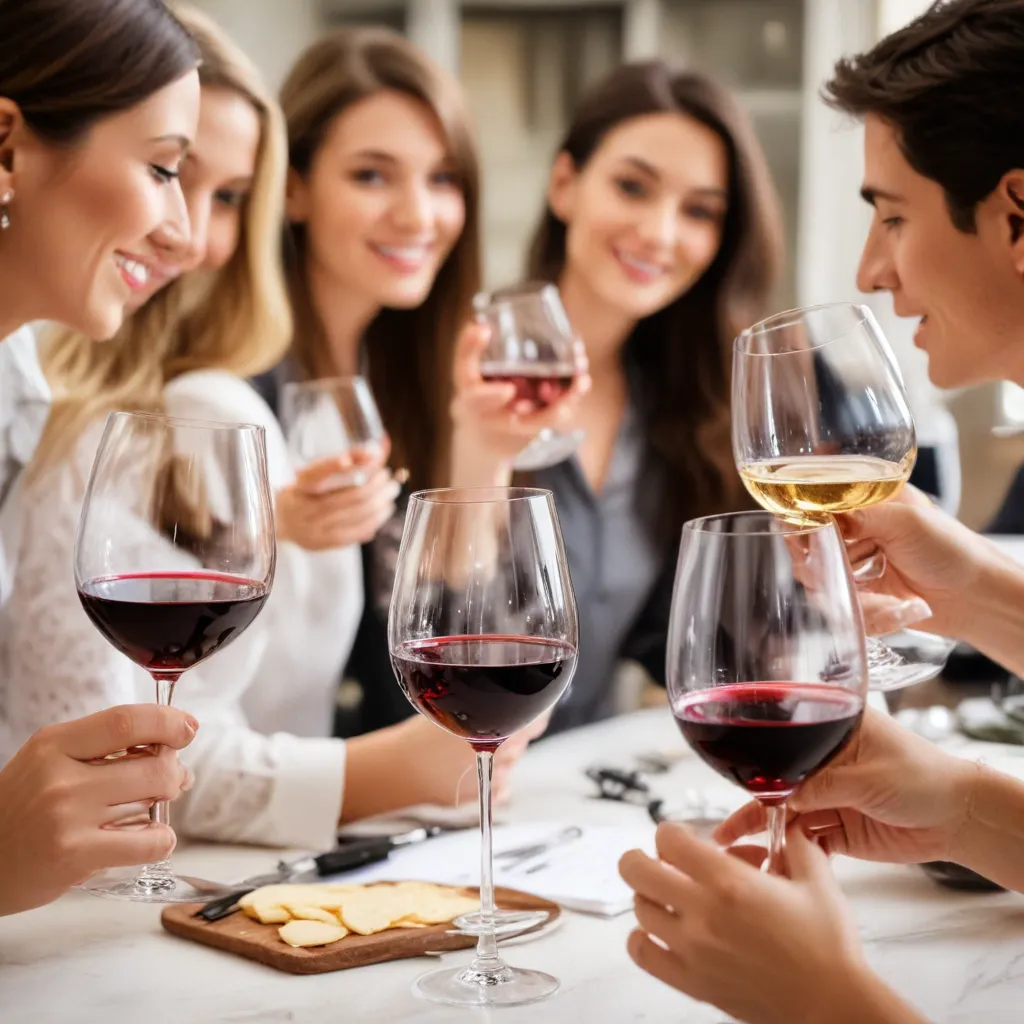
Popping the cork on a fresh bottle of wine is a sensory delight, releasing a symphony of aromas that captivate the senses. Whether you’re a seasoned oenophile or a curious newcomer, the art of wine tasting offers a world of discovery, allowing you to unlock the nuanced flavors and complex stories hidden within each glass. At the Wine Garden Inn, we believe that cultivating your palate is a journey worth embarking on, as it not only enhances your appreciation for the grape, but also enriches every culinary experience.
The Basics of Wine Tasting
Understanding Wine Varietals
Before we dive into the techniques of wine tasting, it’s essential to have a foundational knowledge of the diverse grape varietals that give each wine its unique character. From the bright and zesty Sauvignon Blanc to the robust and complex Cabernet Sauvignon, the world of wine is a tapestry of flavors, textures, and aromas. By familiarizing yourself with the distinct profiles of different grape varieties, you’ll be better equipped to pinpoint and appreciate the nuances in each glass.
Identifying Aroma and Flavor Notes
The art of wine tasting begins with the sense of smell. As you raise the glass to your nose, take a moment to inhale deeply, allowing the aromas to unfold. You may detect hints of ripe fruit, freshly cut herbs, or even subtle undertones of spice or oak. Catalogue these olfactory impressions, as they will provide valuable clues to the wine’s origins, vinification methods, and overall personality.
Tasting Techniques
When it comes to the tasting itself, approach the experience with mindfulness and patience. Allow the wine to linger on your palate, taking note of the initial flavors that burst forth, the way the taste evolves, and the length of the finish. Pay attention to the wine’s acidity, tannin structure, and overall mouthfeel. These sensations will help you discern the wine’s body, balance, and potential for aging.
Cultivating Your Wine Palate
Exploring Different Wine Regions
One of the most rewarding aspects of wine tasting is the opportunity to explore the diverse terroirs and microclimates that shape the character of each bottle. From the sun-drenched vineyards of Napa Valley to the cool, maritime influences of Burgundy, delving into the regional nuances of wine can open your palate to a world of new flavors and experiences.
Recognizing Tannins and Acidity
As you taste your way through a variety of wines, you’ll begin to develop a keener understanding of the role that tannins and acidity play in the overall profile of a wine. Tannins, found predominantly in red wines, contribute to the wine’s structure and mouthfeel, while acidity provides the refreshing crispness that balances out the flavors.
Identifying Texture and Mouthfeel
In addition to taste, the texture and mouthfeel of a wine can also be a revealing factor in your tasting journey. A full-bodied, velvety Merlot may offer a different tactile experience than a light, crisp Pinot Grigio. Paying attention to these nuances will help you better understand the relationship between a wine’s components and its overall personality.
Mastering Wine Evaluation
Evaluating Wine Appearance
Before the first sip, take a moment to examine the wine’s appearance. Notice the color, clarity, and viscosity of the liquid in your glass. These visual cues can provide insights into the wine’s age, grape variety, and even the winemaking techniques employed.
Assessing Aroma and Bouquet
As you swirl the wine in your glass, allow your sense of smell to guide you through a symphony of aromas. Detect primary notes of fruit, floral, or herbaceous scents, as well as secondary and tertiary aromas that develop during fermentation and aging. This olfactory exploration will deepen your understanding of the wine’s complexity.
Analyzing Taste and Finish
Finally, the moment of truth – the tasting itself. Allow the wine to coat your palate, taking note of the initial flavors, the way they evolve, and the length and quality of the finish. Pay attention to the balance between the wine’s sweetness, acidity, tannins, and alcohol content, as these elements work in harmony to create the overall taste experience.
Pairing Wine with Food
Complementing Flavors
One of the joys of wine tasting is discovering the perfect pairing with your culinary creations. When selecting a wine to accompany a dish, consider how the flavors and textures of the food will interact with the wine’s characteristics. A bright, acidic white wine may beautifully complement a citrus-based salad, while a robust red can stand up to the bold flavors of a grilled steak.
Balancing Intensity
In addition to flavor, it’s important to consider the overall intensity of both the wine and the dish. As a general rule, pair lighter, more delicate wines with subtler food preparations, and reserve the bold, full-bodied varieties for heartier, more robust meals. This balance will ensure that neither the wine nor the food overpowers the other, creating a harmonious dining experience.
Considering Food Preparation
The way a dish is prepared can also influence the optimal wine pairing. For example, a sautéed or grilled preparation may call for a different wine than a braised or roasted dish, due to the nuances in texture and flavors introduced by the cooking method.
At the Wine Garden Inn, we’re passionate about guiding our guests on a journey of wine tasting and culinary discovery. Whether you’re a seasoned connoisseur or just beginning to explore the world of wine, we invite you to join us in mastering the art of wine tasting and cultivating your palate. Visit our website to learn more about our upcoming events, wine tastings, and educational workshops, where you can dive deeper into the fascinating world of enology and gastronomy.
